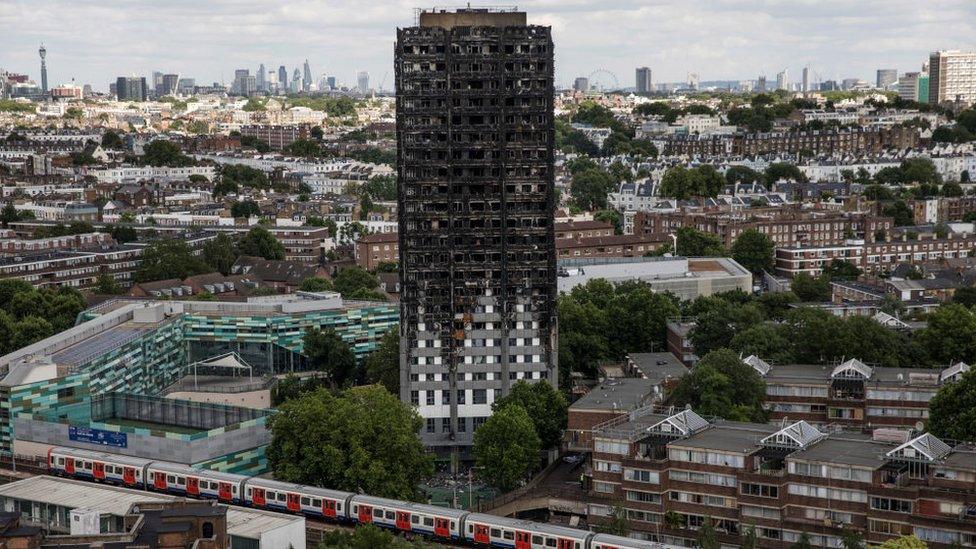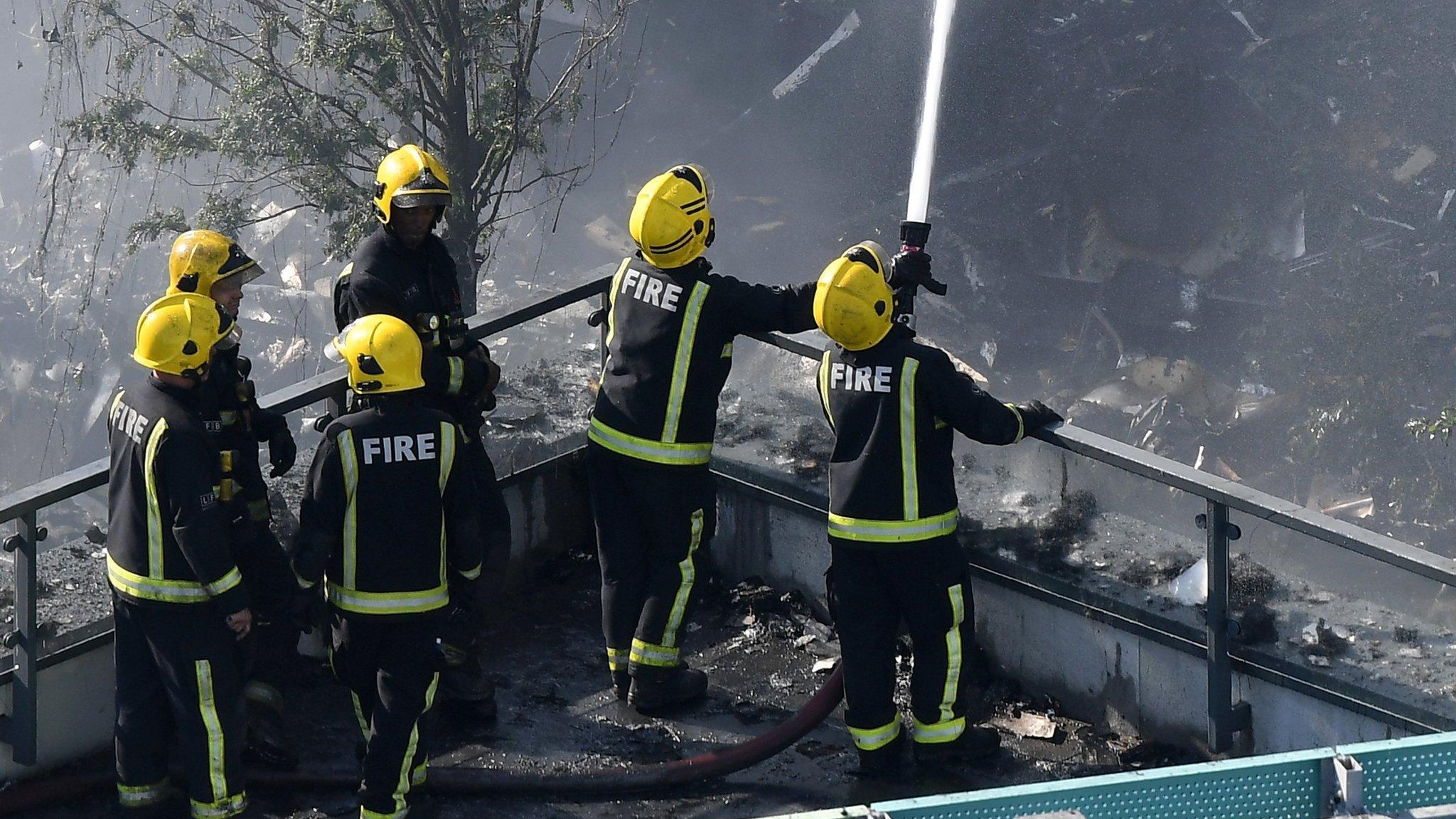London fire: Most services would have sent high ladder to Grenfell
- Published

Most UK fire services would have automatically sent a high ladder to Grenfell Tower had the fire happened in their area, BBC Newsnight can reveal.
A Newsnight investigation last week revealed the London Fire Brigade failed to dispatch a high "aerial" ladder immediately to the west London blaze.
But 31 of the 44 UK fire services with high-rise blocks would have sent a high ladder, the programme has learned.
The Home Office said it was up to each fire authority to manage its resources.
Last week's investigation found that a high ladder had not been included in the London Fire Brigade's "predetermined attendance" plan and it took more than 30 minutes for such an appliance to arrive at the 24-storey west London tower.
The London Fire Brigade is one of several services which has changed its procedures since Grenfell and will now automatically send high ladders to tower block fires as an interim measure.
Newsnight's latest findings came after the programme requested the predetermined attendance plans - or PDAs - for high rise fires from every fire service in the country.
The PDAs detail what each service will do automatically in the moments after a fire is reported.
They show that 70% of the fire services in the UK which have high-rise blocks in their regions would automatically have dispatched a high ladder to a tower blaze before the Grenfell disaster.
Since then, four services, including London, have altered their plans.
Sorry, your browser cannot display this map
However, Newsnight's research reveals that nine brigades still would not immediately send an aerial ladder to a tower blaze.
The investigation also shows significant variations in the number of response vehicles dispatched by services across the country.
In Kent, three fire engines would be sent to a reported fire in a tower block, with no high ladder. Fire services in Hampshire and Surrey - for the same fire in the same tower - would send six fire engines and a high ladder as first response.
A fire engine is expected to carry five firefighters.
Minimum requirements
Manchester, Humberside, London and Warwickshire have all increased their PDA with fires in tall buildings to include a high ladder since Grenfell.
But Leicestershire, Lancashire, Tyne and Wear, the West Midlands, Kent and Essex fire services will still not automatically send a tall ladder to a fire in a high-rise building unless specifically requested.
The figures have led to calls for the government to implement mandatory minimum requirements for fire services attending high-rise fires.
Fire Brigades Union general secretary Matt Wrack told Newsnight: "It was absolutely indefensible before Grenfell Tower to have such a postcode lottery of how we respond to fires in residential blocks of flats. After Grenfell Tower it's completely outrageous."
Why did it take so long to get an aerial platform to the tower block? BBC Newsnight investigates
Referring to the Grenfell Tower disaster, he added: "An aerial appliance applying large quantities of water to the outside of the building could have made a big difference. It clearly did make a difference when it arrived."
A Home Office spokesperson said: "It is the responsibility of each fire and rescue authority to manage their resources across prevention, protection and operational response to meet local risk."
"Local areas consider risk through their Integrated Risk Management Plan and over the past 10 years there has been a 52% decrease in the total number of fires attended by fire and rescue services."
Newsnight requested PDAs for tower block fires from all 52 fire services in the UK.
Every service responded and all bar one sent details to the BBC. Seven brigades have no high rise tower blocks in their area.
Last week, a London Fire Brigade spokesman told Newsnight: "It is important to understand that fires in high-rise buildings are nearly always dealt with internally, not usually needing an aerial appliance.
"The fundamental issue of high rise safety remains that buildings are maintained to stop fires spreading."
The spokesman said: "An 'interim' change to pre-determined attendance for high rise buildings was introduced in direct response to the government's action to address concerns of cladding on buildings.
"The brigade's pre-determined attendance to high-rise buildings had already been increased in June 2015 from three fire engines to four as part of our ongoing review of high rise firefighting."
- Published7 July 2017
